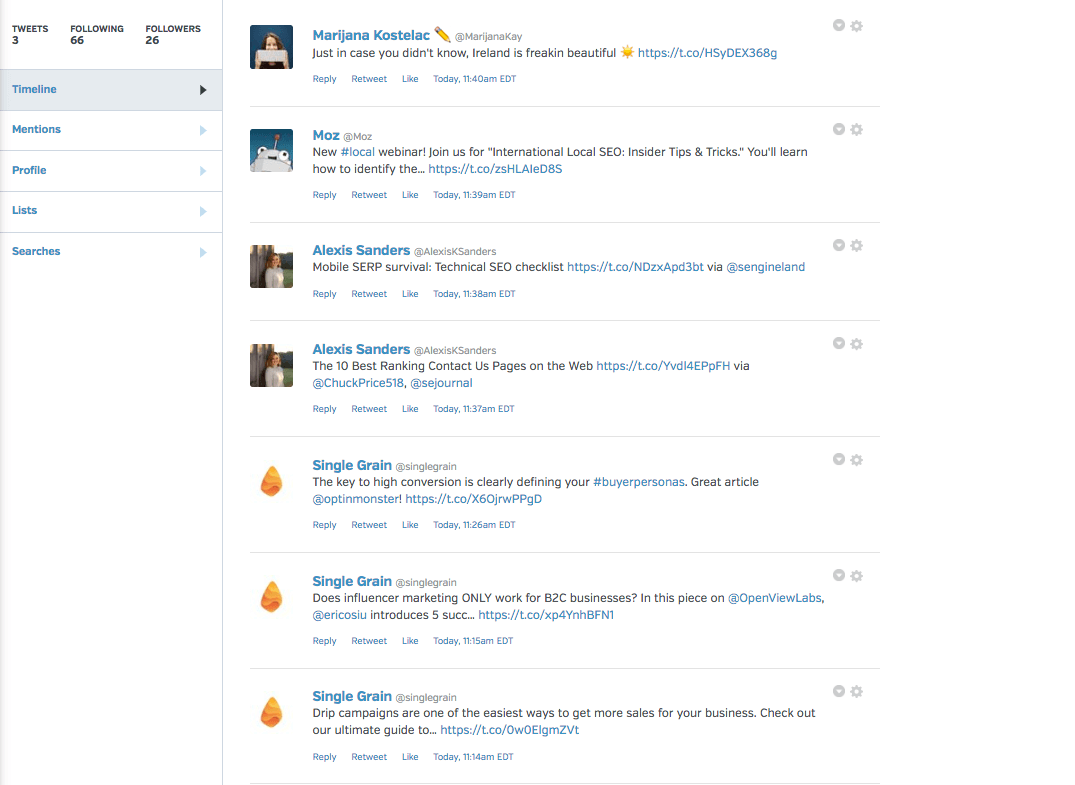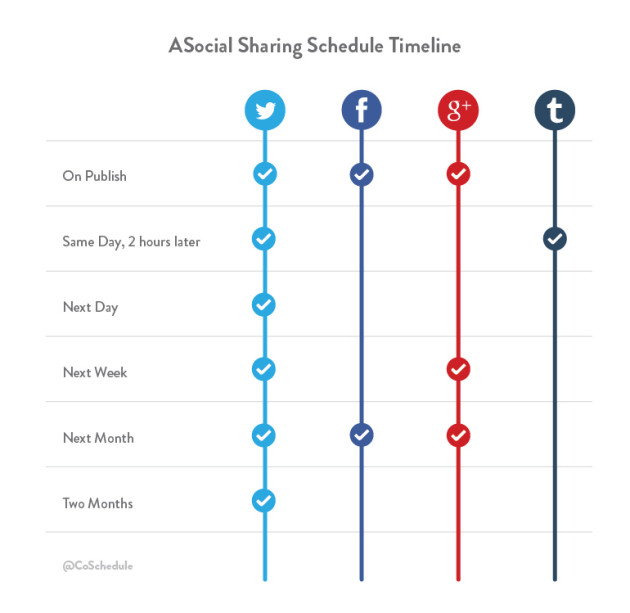One of the greatest challenges for marketers is the constant creation of unique and engaging content.
The average content marketer spends hours developing knowledge, brainstorming ideas, and carefully creating their own unique spin on a sometimes overly explored topic. Once their content is ready for publishing, they’re faced with the added hurdle of reaching their target audience.
This is where social media steps in.
A ton of social media tools have emerged to make social sharing easier, and these tools help social media managers be more efficient. But what helps them succeed?
Repetition.
The goal of marketing is to reach your target audience at the right time. Social media marketers have to consider the short attention span of their followers and diminishing shelf life of their message. This is why repetition gives their carefully crafted message the best chance of survival.
But what content should be repeated and how often?
How Often To Reshare
CoSchedule, our go-to editorial calendar app, shared an example of their own social media sharing schedule in order to create a “peppered” social media approach.
Co-founder Garrett Moon argues when we publish and only share once, we miss out on the opportunity for the click-throughs that our content deserves. Moon believes resharing is an essential part of providing your audience with the value you’ve promised them.
He illustrates this with a sample schedule:
- On publish – Social message sent when blog post goes live.
- Same day – Initial social messages trickle out to your accounts over the next 2-3 hours.
- Next day – Messages are shared again on the appropriate social channels.
- Next week – Another series of messages are pre-scheduled and sent the following week.
- Next month – Even more social messages are pre-scheduled for the following month.
- Next _____ – Optionally, additional messages can optionally be scheduled for the three-month mark or beyond.
Once you’ve defined a schedule for each network, it helps to create a visual map of your timeline. An organized approach like this greatly enhances the chance your content will be seen.
Taking this idea a step further, social media experts Guy Kawasaki and Peg Fitzpatrick advocate aggressive social media sharing.
An excerpt from their newest book, The Art of Social Media: Power Tips for Power Users, reveals an experiment where they tested four identical repeated tweets. The repeated tweets achieved 5.8 times more clicks!
Their point is hard to argue.
Keeping a Reshare Unique
Mark Traphagen, Senior Director of Online Marketing for Stone Temple Consulting, recently sampled the Twitter activities of 30 active bloggers and social media users. He was surprised to find 80% of these bloggers never shared their posts again.
Why?
Traphegen believes this is largely due to fear of spamming. Spamming may have been a valid concern when fewer people used social media. If you have a low follower count, resharing too often can still look spammy. Active users have much more cluttered streams now. And, if you have a large following, it’s likely a single share may never be seen by most of your followers.
Stone Temple Consulting keeps their reshares unique by changing up the content of their posts. The initial share includes the blog post title; subsequent shares are based on deeper content from within the post.
This tactic prevents their team from sharing the same exact message twice and a tip sometimes catches someone’s attention when the title didn’t.
Compounding Returns in Social Shares
Although some marketers may be worried about spamming their followers, content should always be reshared on social media.
Repetition provides the opportunity to reach users working in different time zones and engaging with new followers who may have missed the first message. Resharing also offers the chance to experiment with different headlines to see what drives higher levels of engagement.
If content is shared only once, the power of compounding returns is greatly diminished.

Now social media marketers can get the credit they deserve by automatically delivering Facebook, Twitter and LinkedIn reports that prove value.





Kate, thanks for mentioning CoSchedule! You’re exactly right— resharing is such a crucial part of growing traffic and your audience as a whole. Great post!